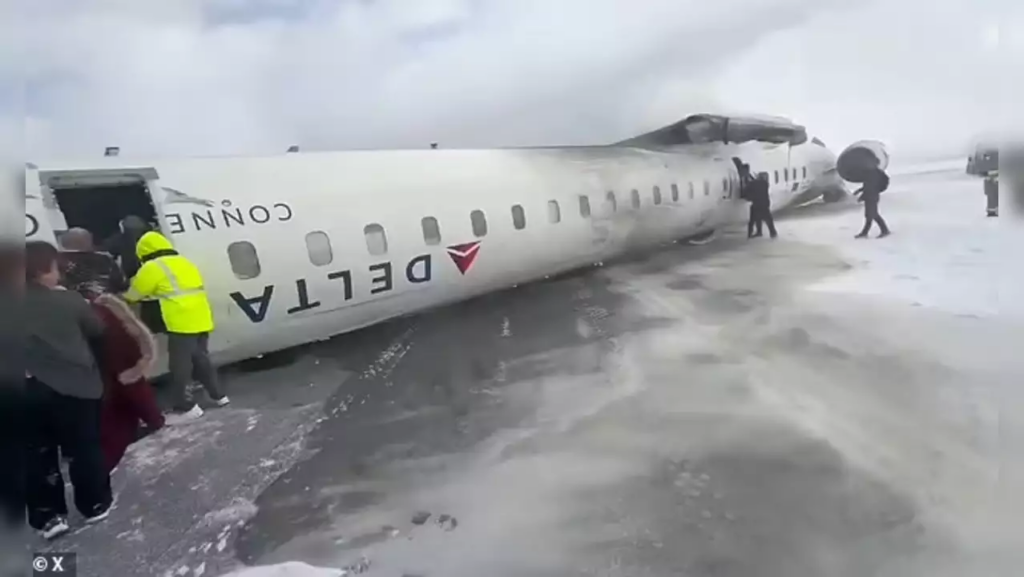
In a shocking turn of events, a Delta Airlines flight crash-landed at Toronto Pearson International Airport on February 17, marking the fourth significant aviation accident in North America within just one month.
This alarming trend comes despite data from the Federal Aviation Administration (FAA) and the National Transportation Safety Board (NTSB) indicating that commercial airline accidents have historically become increasingly rare.
Delta incident: Details of the crash
On Monday afternoon, Delta flight 4819, operated by Endeavor Air, encountered severe weather conditions while landing in Toronto. The aircraft, a CRJ-900LR, flipped upside down on the snowy tarmac, prompting an immediate evacuation of all 80 passengers and crew members aboard. Emergency services swiftly responded to the scene, providing medical attention to 18 individuals, including three who sustained critical injuries—a child, a man in his 60s, and a woman in her 40s.
The incident occurred amid challenging weather conditions characterized by blowing snow and wind gusts reaching up to 32 mph. The temperature hovered around 16.5 degrees Fahrenheit (-8.6 degrees Celsius) at the time of the crash. The Transportation Safety Board of Canada has initiated an investigation into the circumstances surrounding this incident.
A surge in aviation accidents
The Delta Air Lines crash is part of a disturbing pattern of recent aviation accidents across North America. Just weeks prior, on February 6, a Bering Air single-engine turboprop Cessna Caravan tragically crashed near Nome, Alaska, resulting in the deaths of the pilot and nine passengers. This was followed by a catastrophic Learjet 55 crash on January 31 in Philadelphia, which killed all six individuals onboard and injured numerous others on the ground.
Adding to this string of tragedies was a harrowing collision between an American Airlines passenger jet and a military Black Hawk helicopter over Washington, D.C. on January 29, which claimed the lives of all 67 people aboard both aircraft—marking it as the deadliest aviation disaster in the United States since 2001.
Investigating common factors
While these incidents occurred in diverse locations under different circumstances, several common factors have emerged. Experts point to failures in safety protocols, inadequate corporate oversight and communication, and potential flaws in aircraft design as contributing elements. Weather conditions have also played a significant role, particularly in incidents involving winter storms.
Recent personnel changes within the FAA may further complicate matters. The agency has seen significant turnover as hundreds of probationary employees responsible for maintaining critical air traffic control infrastructure were let go. Additionally, key members of the Aviation Security Advisory Committee were dismissed shortly before the Washington, D.C. collision.
As investigations into these incidents continue, aviation safety remains under scrutiny. The recent Delta Airlines crash serves as a stark reminder of the importance of rigorous safety measures and effective oversight within the aviation industry. Authorities are expected to provide further updates as they work to uncover the causes behind these troubling occurrences.






